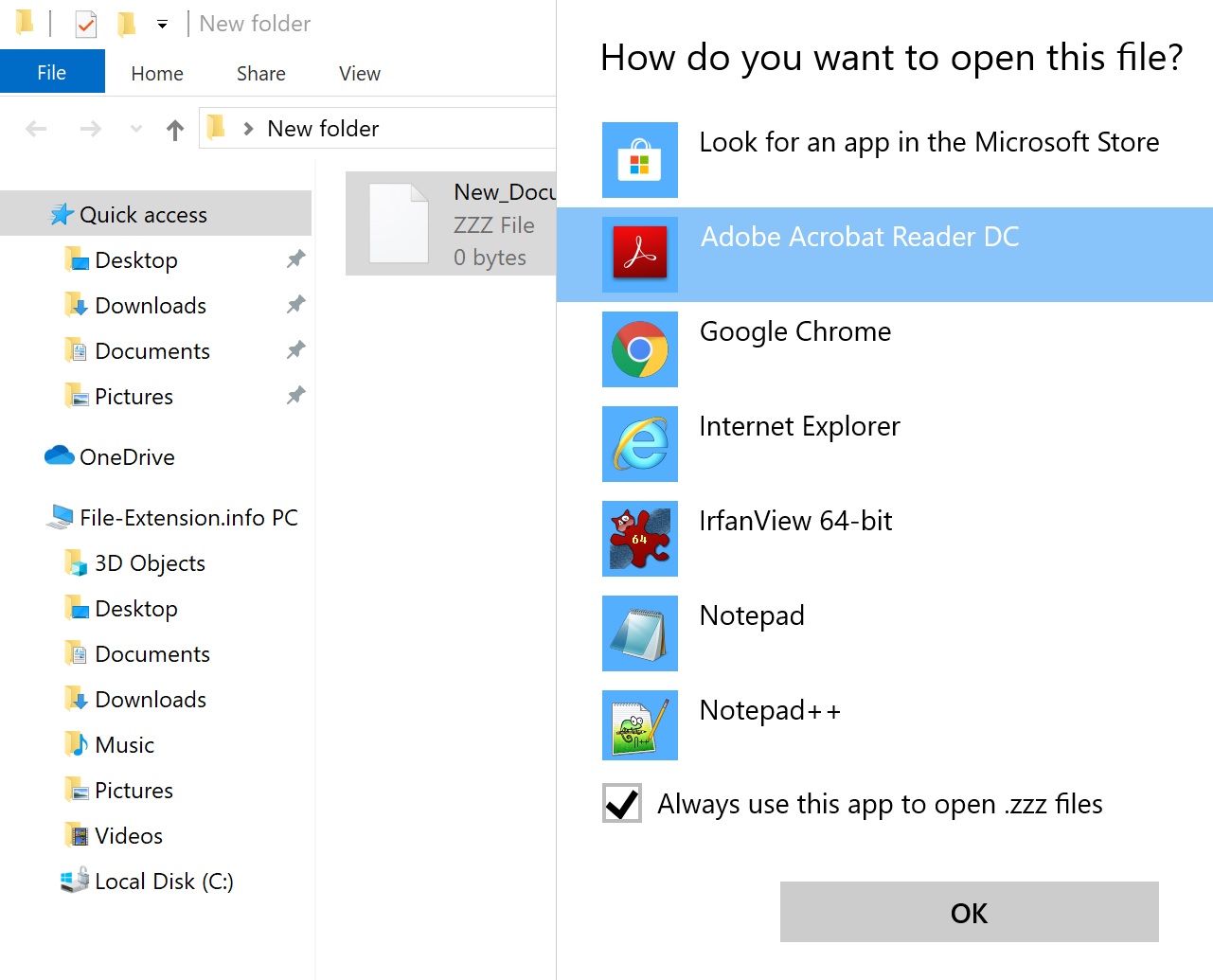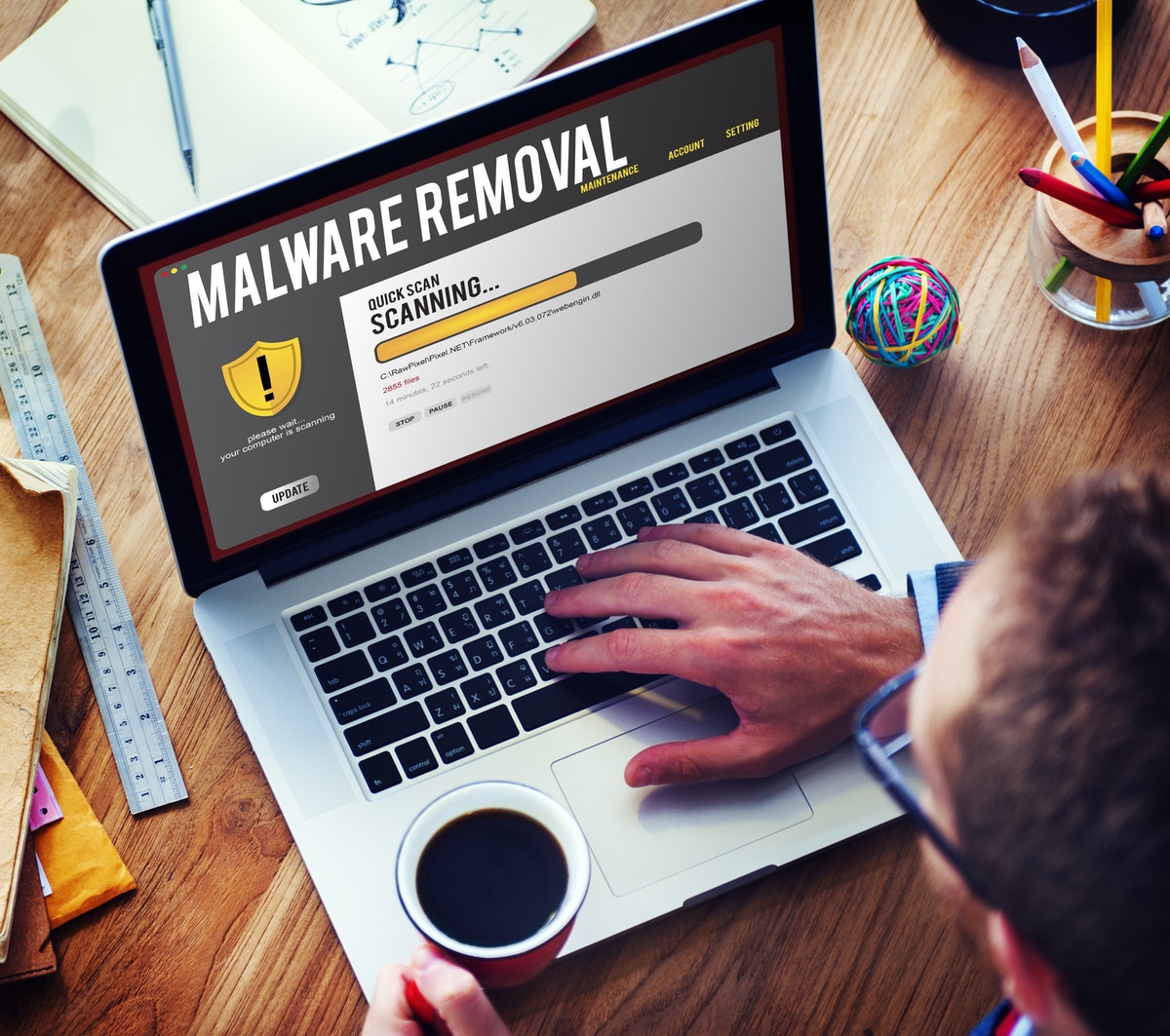Perfetto trace чем открыть
Обновлено: 03.07.2024
Если при попытке открыть файл TRACE на вашем устройстве возникает ошибка, вы должны сделать две вещи - установить соответствующее программное обеспечение и связать файлы TRACE с этим программным обеспечением. Если это не решит проблему, то причина может быть другой - более подробную информацию вы найдете в этой статье.
TRACE расширение файла
- Тип файла VMware ThinApp Trace Log Format
- Разработчик файлов VMware
- Категория файла Другие файлы
- Рейтинг популярности файлов
Как открыть файл TRACE?
При открытии открытия. TRACE файлов могут быть разные причины проблем. Каждая проблема требует своего подхода, но большинство из них можно решить, следуя приведенным ниже инструкциям.
Шаг 1. Установите программу, которая поддерживает TRACE файлы
Чтобы открыть TRACE файл, в системе должна быть установлена соответствующая программа, которая поддерживает этот формат файлов. Ниже представлен список программ, которые поддерживают файлы с расширением TRACE.
Программы, открывающие файлы TRACE
WindowsСкачайте установщик для данного приложения и запустите его. После завершения установки TRACE файлы должны быть открыты с установленным приложением по умолчанию при следующей попытке открыть файл этого типа.
Помните!
Не все перечисленные приложения могут выполнять все операции с файлами TRACE. Некоторые приложения могут открывать только такой файл и просматривать его содержимое, тогда как целью других может быть преобразование файлов в другие форматы файлов. Поэтому вам следует заранее проверить возможности приложений в отношении файлов TRACE.
Шаг 2. Свяжите данное программное обеспечение с файлами TRACE
Может возникнуть ситуация, когда у пользователя есть соответствующее приложение, поддерживающее файлы TRACE, установленные в его системе, но такое приложение не связано с файлами этого типа. Чтобы связать данное приложение с TRACE файлами, пользователь должен открыть подменю файлов, щелкнув правой кнопкой мыши значок файла и выбрав опцию «Открыть с помощью». Система отобразит список предлагаемых программ, которые можно использовать для открытия файлов TRACE. Выберите соответствующую опцию и установите флажок «Всегда использовать выбранное приложение для открытия файлов такого типа». Система сохранит эту информацию, используя выбранную программу, чтобы открыть TRACE файлы.
Шаг 3. Проверьте, нет ли других ошибок, связанных с файлами TRACE
Когда вышеупомянутые решения терпят неудачу, другие варианты должны быть продолжены. Возможно, файл TRACE поврежден или поврежден. Наиболее распространенные причины повреждения файла:
Data sources record data only when one (or more) tracing sessions are active. A tracing session is started by invoking the perfetto cmdline client and passing a config (see QuickStart guide for Android or Linux).
A simple trace config looks like this:
And is used as follows:
perfetto --txt -c config.pbtx -o trace_file.perfetto-trace
TIP: Some more complete examples of trace configs can be found in the repo in /test/configs/ .
NOTE: If you are tracing on Android using adb and experiencing problems, see the Android section below.
TraceConfig
The TraceConfig is a protobuf message (reference docs) that defines:
The general behavior of the whole tracing system, e.g.:
- The max duration of the trace.
- The number of in-memory buffers and their size.
- The max size of the output trace file.
Which data sources to enable and their configuration, e.g.:
For the kernel tracing data source , which ftrace events to enable.
For the heap profiler, the target process name and sampling rate.
See the data sources section of the docs for details on how to configure the data sources bundled with Perfetto.
The x mappings: which buffer each data source should write into (see buffers section below).
The tracing service ( traced ) acts as a configuration dispatcher: it receives a config from the perfetto cmdline client (or any other Consumer) and forwards parts of the config to the various Producers connected.
When a tracing session is started by a consumer, the tracing service will:
- Read the outer section of the TraceConfig (e.g. duration_ms , buffers ) and use that to determine its own behavior.
- Read the list of data sources in the data_sources section. For each data source listed in the config, if a corresponding name ( "linux.ftrace" in the example below) was registered, the service will ask the producer process to start that data source, passing it the raw bytes of the DataSourceConfig subsection verbatim to the data source (See backward/forward compat section below).

Buffers
The buffer sections define the number, size and policy of the in-memory buffers owned by the tracing service. It looks as follows:
Each buffer has a fill policy which is either:
RING_BUFFER (default): the buffer behaves like a ring buffer and writes when full will wrap over and replace the oldest trace data in the buffer.
DISCARD: the buffer stops accepting data once full. Further write attempts are dropped.
WARNING: DISCARD can have unexpected side-effect with data sources that commit data at the end of the trace.
A trace config must define at least one buffer to be valid. In the simplest case all data sources will write their trace data into the same buffer.
While this is fine for most basic cases, it can be problematic in cases where different data sources write at significantly different rates.
For instance, imagine a trace config that enables both:
The kernel scheduler tracer. On a typical Android phone this records
10000 events/second, writing
1 MB/s of trace data into the buffer.
Memory stat polling. This data source writes the contents of /proc/meminfo into the trace buffer and is configured to poll every 5 seconds, writing
100 KB per poll interval.
Dynamic buffer mapping
Data-source <> buffer mappings are dynamic in Perfetto. In the simplest case a tracing session can define only one buffer. By default, all data sources will record data into that one buffer.
In cases like the example above, it might be preferable separating these data sources into different buffers. This can be achieved with the target_buffer field of the TraceConfig.

Can be achieved with:
PBTX vs binary format
There are two ways to pass the trace config when using the perfetto cmdline client format:
Text format
It is the preferred format for human-driven workflows and exploration. It allows to pass directly the text file in the PBTX (ProtoBuf TeXtual representation) syntax, for the schema defined in the trace_config.proto (see reference docs)
When using this mode pass the --txt flag to perfetto to indicate the config should be interpreted as a PBTX file:
perfetto -c /path/to/config.pbtx --txt -o trace_file.perfetto-trace
NOTE: The --txt option has been introduced only in Android 10 (Q). Older versions support only the binary format.
Binary format
and then passing it to perfetto as follows, without the --txt argument:
perfetto -c config.bin -o trace_file.perfetto-trace
Streaming long traces
By default Perfetto keeps the full trace buffer(s) in memory and writes it into the destination file (the -o cmdline argument) only at the end of the tracing session. This is to reduce the perf-intrusiveness of the tracing system. This, however, limits the max size of the trace to the physical memory size of the device, which is often too limiting.
In some cases (e.g., benchmarks, hard to repro cases) it is desirable to capture traces that are way larger than that, at the cost of extra I/O overhead.
To achieve that, Perfetto allows to periodically write the trace buffers into the target file (or stdout) using the following TraceConfig fields:
write_into_file (bool) : When true periodically drains the trace buffers into the output file. When this option is enabled, the userspace buffers need to be just big enough to hold tracing data between two write periods. The buffer sizing depends on the activity of the device. The data rate of a typical trace is
1-4 MB/s. So a 16MB in-memory buffer can hold for up write periods of
4 seconds before starting to lose data.
file_write_period_ms (uint32) : Overrides the default drain period (5s). Shorter periods require a smaller userspace buffer but increase the performance intrusiveness of tracing. If the period given is less than 100ms, the tracing service will use a period of 100ms.
max_file_size_bytes (uint64) : If set, stops the tracing session after N bytes have been written. Used to cap the size of the trace.
For a complete example of a working trace config in long-tracing mode see /test/configs/long_trace.cfg .
Summary: to capture a long trace just set write_into_file:true , set a long duration_ms and use an in-memory buffer size of 32MB or more.
Data-source specific config
Alongside the trace-wide configuration parameters, the trace config also defines data-source-specific behaviors. At the proto schema level, this is defined in the DataSourceConfig section of TraceConfig :
Fields like ftrace_config , android_power_config are examples of data-source specific configs. The tracing service will completely ignore the contents of those fields and route the whole DataSourceConfig object to any data source registered with the same name.
A note on backwards/forward compatibility
TODO: we are aware of the fact that today extending the DataSourceConfig with a custom proto requires changing the data_source_config.proto in the Perfetto repo, which is unideal for external projects. The long-term plan is to reserve a range of fields for non-upstream extensions and provide generic templated accessors for client code. Until then, we accept patches upstream to introduce ad-hoc configurations for your own data sources.
Multi-process data sources
Some data sources are singletons. E.g., in the case of scheduler tracing that Perfetto ships on Android, there is only data source for the whole system, owned by the traced_probes service.
However, in the general case multiple processes can advertise the same data source. This is the case, for instance, when using the Perfetto SDK for userspace instrumentation.
If this happens, when starting a tracing session that specifies that data source in the trace config, Perfetto by default will ask all processes that advertise that data source to start it.
In some cases it might be desirable to further limit the enabling of the data source to a specific process (or set of processes). That is possible through the producer_name_filter and producer_name_regex_filter .
NOTE: the typical Perfetto run-time model is: one process == one Perfetto Producer; one Producer typically hosts multiple data sources.
When those filters are set, the Perfetto tracing service will activate the data source only in the subset of producers matching the filter.
Triggers
In nominal conditions, a tracing session has a lifecycle that simply matches the invocation of the perfetto cmdline client: trace data recording starts when the TraceConfig is passed to perfetto and ends when either the TraceConfig.duration_ms has elapsed, or when the cmdline client terminates.
Perfetto supports an alternative mode of either starting or stopping the trace which is based on triggers. The overall idea is to declare in the trace config itself:
- A set of triggers, which are just free-form strings.
- Whether a given trigger should cause the trace to be started or stopped, and the start/stop delay.
Triggers offer a way to unprivileged apps to control, in a limited fashion, the lifecycle of a tracing session. The conceptual model is:
Triggers can be signaled via the cmdline util
(or also by starting an independent trace session which uses only the activate_triggers: "trigger_name" field in the config)
There are two types of triggers:
Start triggers
Start triggers allow activating a tracing session only after some significant event has happened. Passing a trace config that has START_TRACING trigger causes the tracing session to stay idle (i.e. not recording any data) until either the trigger is hit or the trigger_timeout_ms timeout is hit.
trace_duration_ms and triggered traces can not be used at the same time.
Stop triggers
STOP_TRACING triggers allow to prematurely finalize a trace when the trigger is hit. In this mode the trace starts immediately when the perfetto client is invoked (like in nominal cases). The trigger acts as a premature finalization signal.
This can be used to use perfetto in flight-recorder mode. By starting a trace with buffers configured in RING_BUFFER mode and STOP_TRACING triggers, the trace will be recorded in a loop and finalized when the culprit event is detected. This is key for events where the root cause is in the recent past (e.g., the app detects a slow scroll or a missing frame).
Android
On Android, there are some caveats around using adb shell
- Ctrl+C, which normally causes a graceful termination of the trace, is not propagated by ADB when using adb shell perfetto but only when using an interactive PTY-based session via adb shell .
- On non-rooted devices before Android 12, the config can only be passed as cat config | adb shell perfetto -c - (-: stdin) because of over-restrictive SELinux rules. Since Android 12 /data/misc/perfetto-configs can be used for storing configs.
- On devices before Android 10, adb cannot directly pull /data/misc/perfetto-traces . Use adb shell cat /data/misc/perfetto-traces/trace > trace to work around.
- When capturing longer traces, e.g. in the context of benchmarks or CI, use PID=$(perfetto --background) and then kill $PID to stop.
Other resources
Except as otherwise noted, the content of this page is licensed under the Creative Commons Attribution 4.0 License, and code samples are licensed under the Apache 2.0 License. Java is a registered trademark of Oracle and/or its affiliates.
Perfetto can capture system traces on Linux. All ftrace-based data sources and most other procfs / sysfs-based data sources are supported.
Currently there are no packages or prebuilts for Linux. In order to run Perfetto on Linux you need to build it from source.
Building from source
Check out the code:
Download and extract build dependencies:
If the script fails with SSL errors, try upgrading your openssl package.
Generate the build configuration
Build the Linux tracing binaries (On Linux it uses a hermetic clang toolchain, downloaded as part of step 2):
Capturing a trace
Capturing a trace with ftrace and /proc pollers, no SDK
If you are interested in overall system tracing and are not interested in testing the SDK, you can use tracebox in autostart mode as follows:
out/linux/tracebox -o trace_file.perfetto-trace --txt -c test /configs/scheduling.cfg
Testing the SDK integration in out-of-process tracing mode (system mode)
If you are using the Perfetto tracing SDK and want to capture a fused trace that contains both system traces events and your custom app trace events, you need to start the traced and traced_probes services ahead of time and then use the perfetto cmdline client.
Run the convenience script with an example tracing config (10s duration):
tools/tmux -c test /configs/scheduling.cfg -C out/linux -n
This will open a tmux window with three panes, one per the binary involved in tracing: traced , traced_probes and the perfetto client cmdline.
Start the tracing session by running the pre-filled perfetto command in the down-most [consumer] pane.
Detach from the tmux session with Ctrl-B D ,or shut it down with tmux kill-session -t demo . The script will then copy the trace to /tmp/trace.perfetto-trace , as a binary-encoded protobuf (see TracePacket reference).
Visualizing the trace
We can now explore the captured trace visually by using a dedicated web-based UI.
Navigate to ui.perfetto.dev in a browser.
Click the Open trace file on the left-hand menu, and load the captured trace (by default at /tmp/trace.perfetto-trace ).
Explore the trace by zooming/panning using WASD, and mouse for expanding process tracks (rows) into their constituent thread tracks. Press "?" for further navigation controls.
Alternatively, you can explore the trace contents issuing SQL queries through the trace processor.
Except as otherwise noted, the content of this page is licensed under the Creative Commons Attribution 4.0 License, and code samples are licensed under the Apache 2.0 License. Java is a registered trademark of Oracle and/or its affiliates.
Программы, которые поддерживают TRACE расширение файла
Следующий список функций TRACE -совместимых программ. TRACE файлы можно встретить на всех системных платформах, включая мобильные, но нет гарантии, что каждый из них будет должным образом поддерживать такие файлы.
Программы, обслуживающие файл TRACE
Как открыть файл TRACE?
Проблемы с доступом к TRACE могут быть вызваны разными причинами. Что важно, все распространенные проблемы, связанные с файлами с расширением TRACE, могут решать сами пользователи. Процесс быстрый и не требует участия ИТ-специалиста. Мы подготовили список, который поможет вам решить ваши проблемы с файлами TRACE.
Шаг 1. Установите ThinApp программное обеспечение

Наиболее распространенной причиной таких проблем является отсутствие соответствующих приложений, поддерживающих файлы TRACE, установленные в системе. Решение простое, просто скачайте и установите ThinApp. Полный список программ, сгруппированных по операционным системам, можно найти выше. Если вы хотите загрузить установщик ThinApp наиболее безопасным способом, мы рекомендуем вам посетить сайт VMware, Inc. и загрузить его из официальных репозиториев.
Шаг 2. Убедитесь, что у вас установлена последняя версия ThinApp

Если проблемы с открытием файлов TRACE по-прежнему возникают даже после установки ThinApp, возможно, у вас устаревшая версия программного обеспечения. Проверьте веб-сайт разработчика, доступна ли более новая версия ThinApp. Может также случиться, что создатели программного обеспечения, обновляя свои приложения, добавляют совместимость с другими, более новыми форматами файлов. Если у вас установлена более старая версия ThinApp, она может не поддерживать формат TRACE. Последняя версия ThinApp должна поддерживать все форматы файлов, которые совместимы со старыми версиями программного обеспечения.
Шаг 3. Назначьте ThinApp для TRACE файлов
Если проблема не была решена на предыдущем шаге, вам следует связать TRACE файлы с последней версией ThinApp, установленной на вашем устройстве. Следующий шаг не должен создавать проблем. Процедура проста и в значительной степени не зависит от системы

Выбор приложения первого выбора в Windows
- Выберите пункт Открыть с помощью в меню «Файл», к которому можно щелкнуть правой кнопкой мыши файл TRACE.
- Далее выберите опцию Выбрать другое приложение а затем с помощью Еще приложения откройте список доступных приложений.
- Последний шаг - выбрать опцию Найти другое приложение на этом. указать путь к папке, в которой установлен ThinApp. Теперь осталось только подтвердить свой выбор, выбрав Всегда использовать это приложение для открытия TRACE файлы и нажав ОК .
Выбор приложения первого выбора в Mac OS
Шаг 4. Проверьте TRACE на наличие ошибок
Вы внимательно следили за шагами, перечисленными в пунктах 1-3, но проблема все еще присутствует? Вы должны проверить, является ли файл правильным TRACE файлом. Вероятно, файл поврежден и, следовательно, недоступен.

1. Проверьте TRACE файл на наличие вирусов или вредоносных программ.
Если случится так, что TRACE инфицирован вирусом, это может быть причиной, которая мешает вам получить к нему доступ. Немедленно просканируйте файл с помощью антивирусного инструмента или просмотрите всю систему, чтобы убедиться, что вся система безопасна. Если файл TRACE действительно заражен, следуйте инструкциям ниже.
2. Убедитесь, что файл с расширением TRACE завершен и не содержит ошибок
Если вы получили проблемный файл TRACE от третьего лица, попросите его предоставить вам еще одну копию. В процессе копирования файла могут возникнуть ошибки, делающие файл неполным или поврежденным. Это может быть источником проблем с файлом. Это может произойти, если процесс загрузки файла с расширением TRACE был прерван и данные файла повреждены. Загрузите файл снова из того же источника.
3. Проверьте, есть ли у пользователя, вошедшего в систему, права администратора.
Некоторые файлы требуют повышенных прав доступа для их открытия. Выйдите из своей текущей учетной записи и войдите в учетную запись с достаточными правами доступа. Затем откройте файл VMware ThinApp Trace Log Format.
4. Проверьте, может ли ваша система обрабатывать ThinApp
5. Убедитесь, что ваша операционная система и драйверы обновлены
Современная система и драйверы не только делают ваш компьютер более безопасным, но также могут решить проблемы с файлом VMware ThinApp Trace Log Format. Возможно, файлы TRACE работают правильно с обновленным программным обеспечением, которое устраняет некоторые системные ошибки.
Вы хотите помочь?
Если у Вас есть дополнительная информация о расширение файла TRACE мы будем признательны, если Вы поделитесь ею с пользователями нашего сайта. Воспользуйтесь формуляром, находящимся здесь и отправьте нам свою информацию о файле TRACE.
Читайте также:

